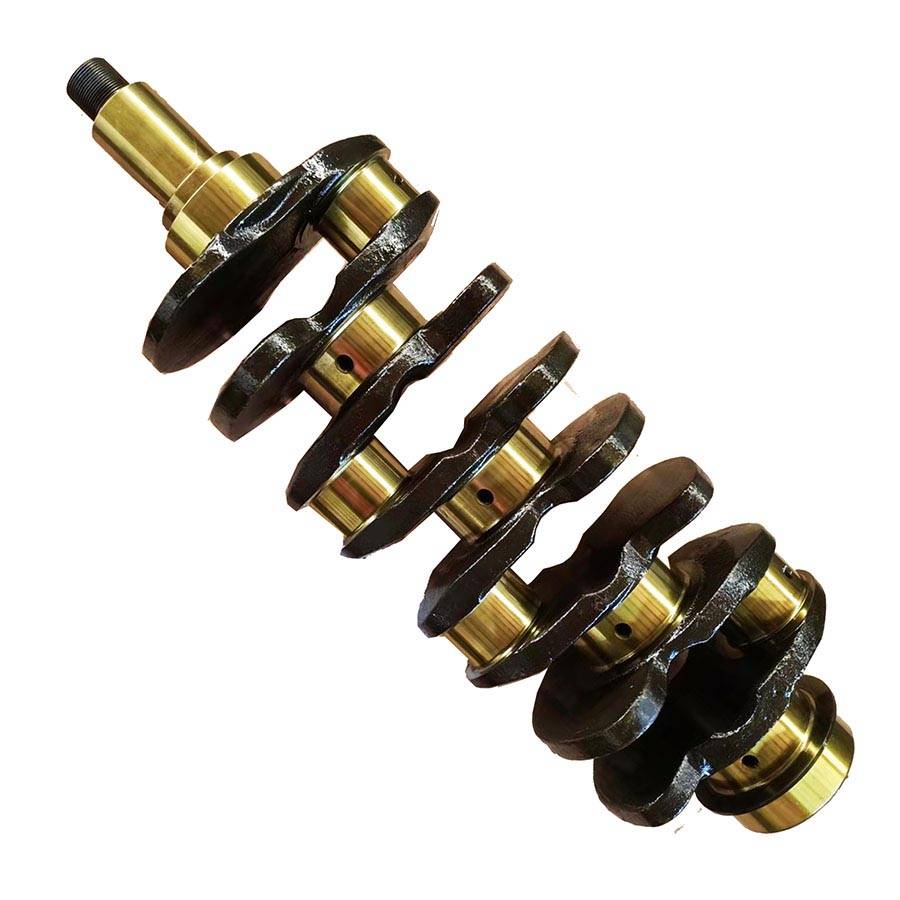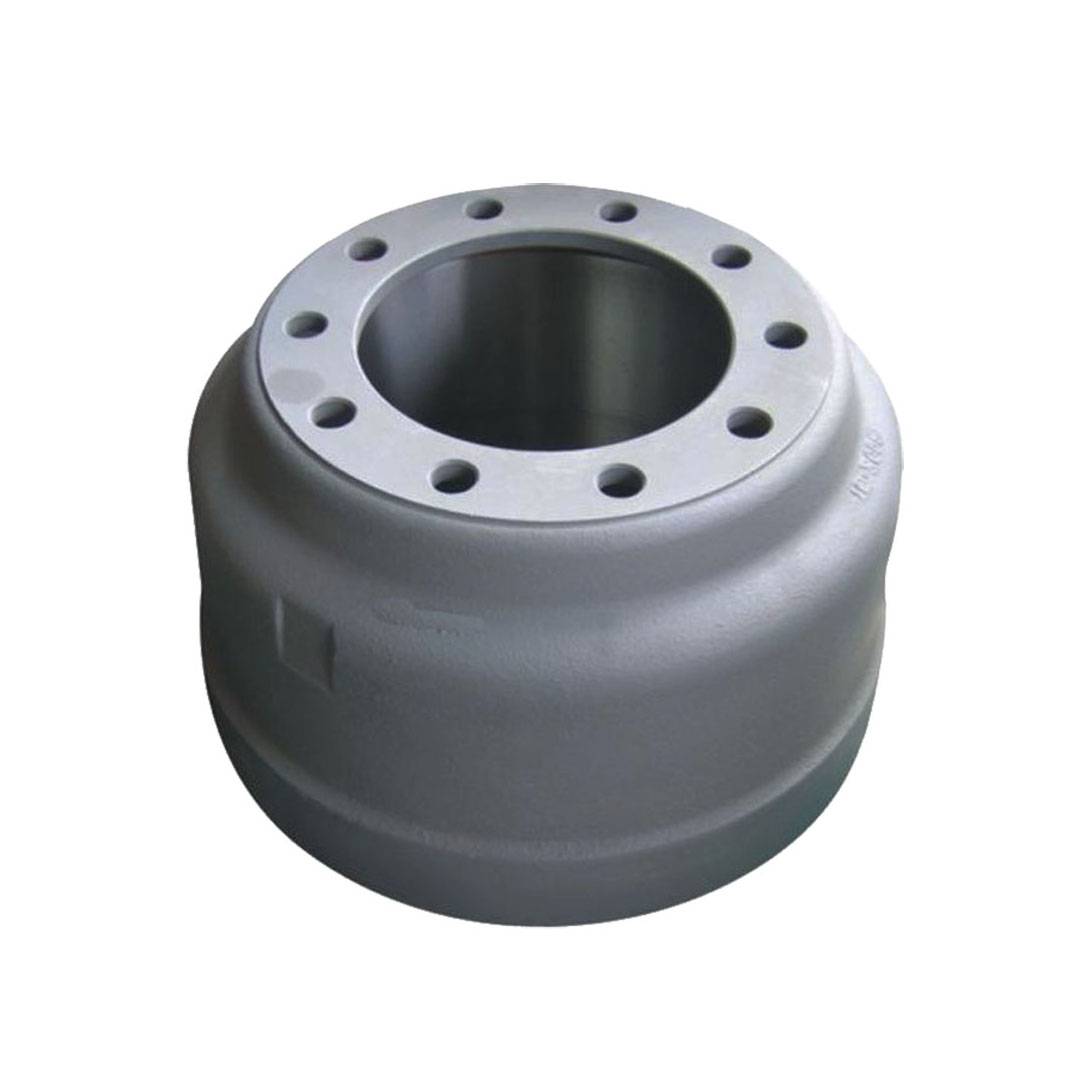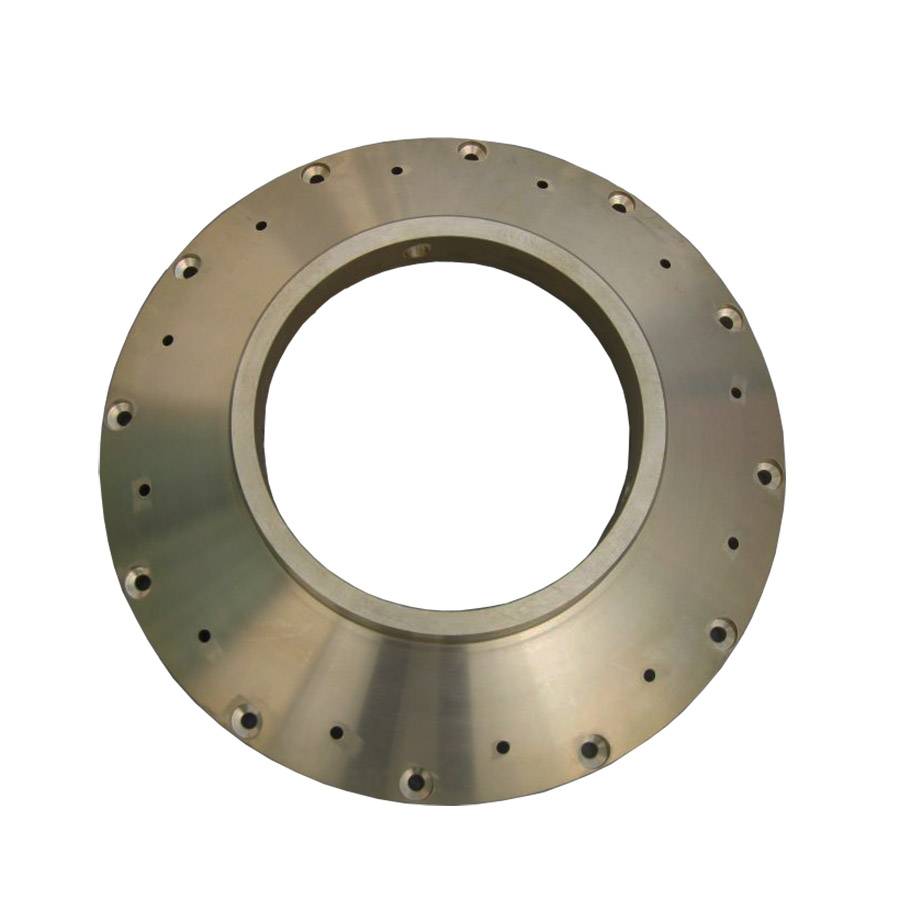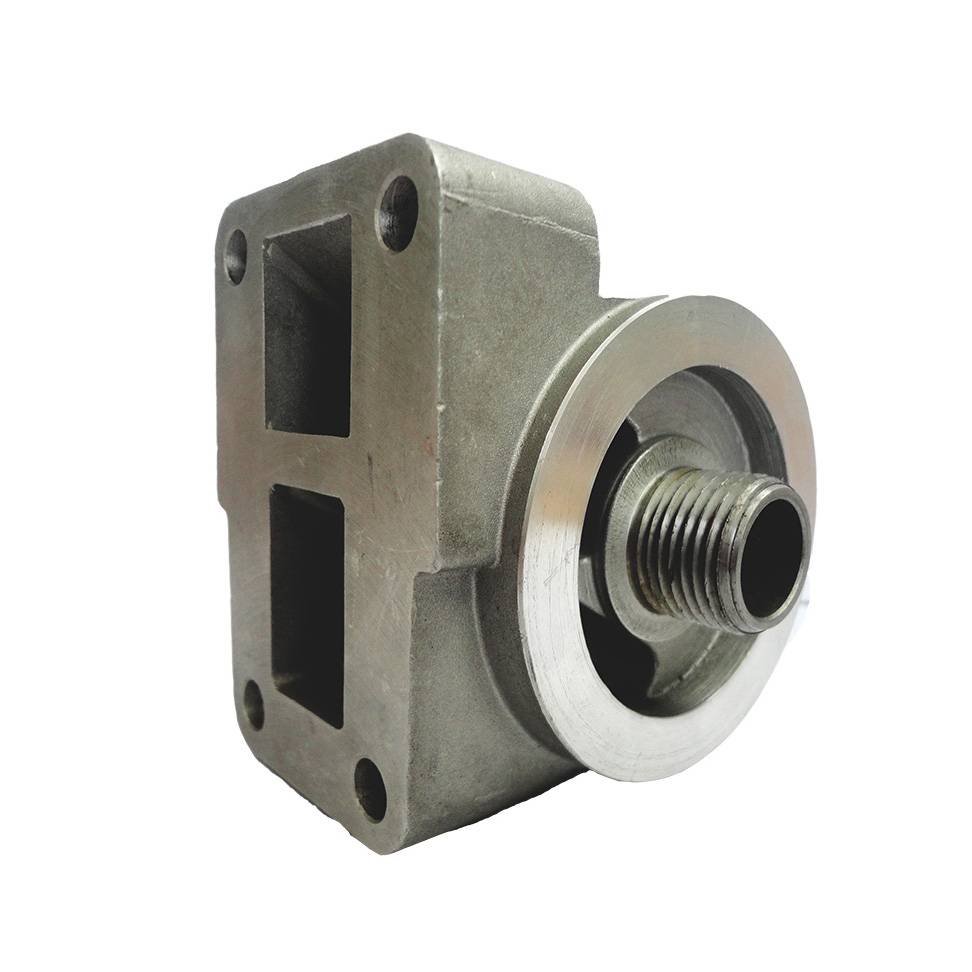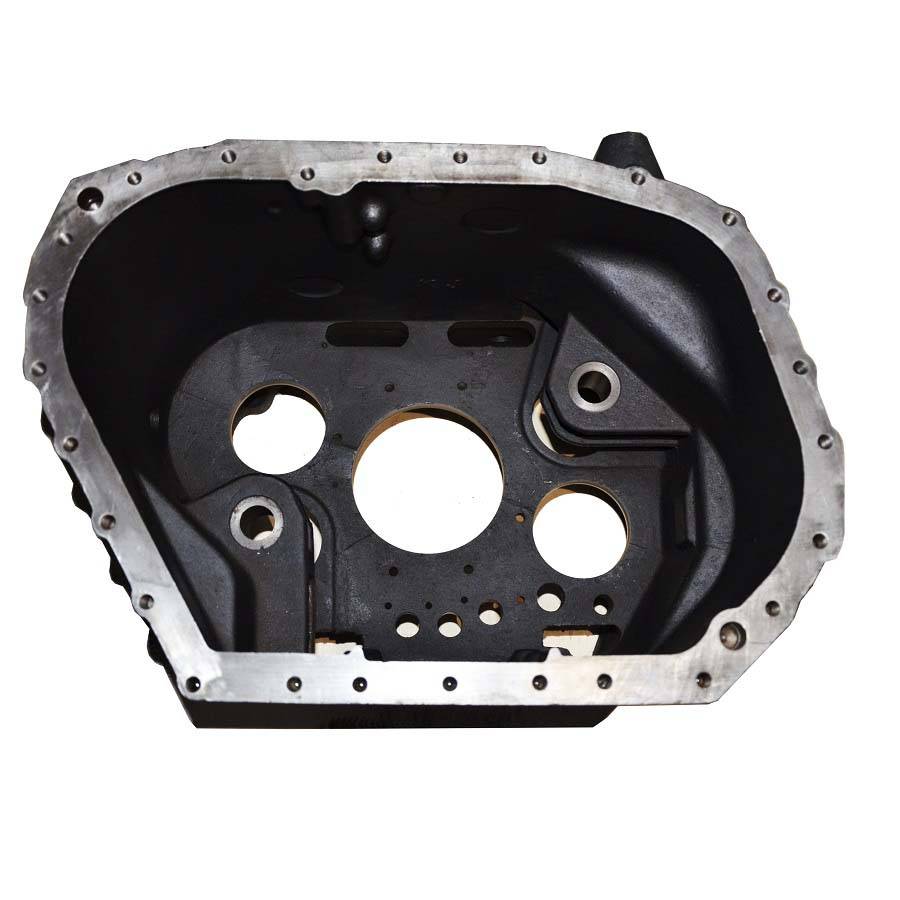Wholesale Price Investment Casting Supplier - Heat Resistant Steel Castings by Investment Casting Process – RMC Foundry Detail:
Heat-resistant steel refers to steel with high temperature oxidation resistance and high temperature strength. High temperature oxidation resistance is an important condition to ensure that the workpiece works for a long time at high temperature. In an oxidizing environment such as high-temperature air, oxygen reacts chemically with the steel surface to form a variety of iron oxide layers. The oxide layer is very loose, loses the original characteristics of steel, and is easy to fall off. In order to improve the high-temperature oxidation resistance of steel, alloying elements are added to the steel to change the oxide structure. Commonly used alloying elements are chromium, nickel, chromium, silicon, aluminum and so on. The high temperature oxidation resistance of steel is only related to the chemical composition.
High temperature strength refers to the ability of steel to sustain mechanical loads for a long time at high temperatures. There are two main effects of steel under mechanical load at high temperature. One is softening, that is, the strength decreases with increasing temperature. The second is creep, that is, under the action of constant stress, the amount of plastic deformation slowly increases with time. The plastic deformation of steel at high temperature is caused by intragranular slip and grain boundary slip. To improve the high temperature strength of steel, alloying methods are usually used. That is, alloying elements are added to the steel to improve the bonding force between atoms and form a favorable structure. Adding chromium, molybdenum, tungsten, vanadium, titanium, etc., can strengthen the steel matrix, increase the recrystallization temperature, and can also form strengthening phase carbides or intermetallic compounds, such as Cr23C6, VC, TiC, etc. These strengthening phases are stable at high temperatures, do not dissolve, do not aggregate to grow, and maintain their hardness. Nickel is added mainly to obtain austenite. The atoms in austenite are arranged tighter than ferrite, the bonding force between atoms is stronger, and the diffusion of atoms is more difficult. Therefore, the high temperature strength of austenite is better. It can be seen that the high-temperature strength of heat-resistant steel is not only related to the chemical composition, but also related to the microstructure.
High-alloy heat-resistant steel castings are widely used in occasions where the working temperature exceeds 650℃. Heat-resistant steel castings refer to steels that work at high temperatures. The development of heat-resistant steel castings is closely related to the technological progress of various industrial sectors such as power stations, boilers, gas turbines, internal combustion engines, and aero engines. Due to the different temperatures and stresses used by various machines and devices, as well as different environments, the types of steel used are also different.
Equivalent Grade of Stainless Steel |
|||||||||
| GROUPS | AISI | W-stoff | DIN | BS | SS | AFNOR | U.N.E. / I.H.A. | JIS | UNI |
| Martensitic and Ferritic Stainless Steel | 420 C | 1,4034 | X43Cr16 | ||||||
| 440 B/1 | 1,4112 | X90 Cr Mo V18 | |||||||
| - | 1.2083 | X42 Cr 13 | - | 2314 | Z 40 C 14 | F.5263 | SUS 420 J1 | - | |
| 403 | 1.4000 | X6Cr13 | 403 S 17 | 2301 | Z 6 C 13 | F.3110 | SUS 403 | X6Cr13 | |
| (410S) | 1.4001 | X7 Cr 14 | (403 S17) | 2301 | Z 8 C 13 | F.3110 | SUS 410 S | X6Cr13 | |
| 405 | 1.4002 | X6 CrAl 13 | 405 S 17 | - | Z 8 CA 12 | F.3111 | SUS 405 | X6 CrAl 13 | |
| 416 | 1.4005 | X12 CrS 13 | 416 S 21 | 2380 | Z 11 CF 13 | F.3411 | SUS 416 | X12CrS13 | |
| 410 | 1.4006 | X 10 Cr 13 | 410 S21 | 2302 | Z 10 C 14 | F.3401 | SUS 410 | X12Cr13 | |
| 430 | 1.4016 | X6 Cr 17 | 430 S 17 | 2320 | Z 8 C 17 | F.3113 | SUS 430 | X8Cr17 | |
| 420 | 1.4021 | X20 Cr 13 | 420 S 37 | 2303 | Z 20 C 13 | F.3402 | SUS 420 J1 | X20Cr13 | |
| 420F | 1.4028 | X30 Cr 13 | 420 S 45 | (2304) | Z 30 C 13 | F.3403 | SUS 420 J2 | X30Cr13 | |
| (420) | 1.4031 | X39Cr13 | 420 S 45 | (2304) | Z 40 C 14 | F.3404 | (SUS 420 J1) | - | |
| 431 | 1.4057 | X20 CrNi 17 2 | 431 S 29 | 2321 | Z 15 CNi 16.02 | F.3427 | SUS 431 | X16CrNi16 | |
| 430F | 1.4104 | X12 CrMoS 17 | - | 2383 | Z 10 CF 17 | F.3117 | SUS 430 F | X10CrS17 | |
| 434 | 1.4113 | X6 CrMo 17 | 434 S 17 | 2325 | Z 8 CD 17.01 | - | SUS 434 | X8CrMo17 | |
| 430Ti | 1.4510 | X6 CrTi 17 | - | - | Z 4 CT 17 | - | SUS 430 LX | X6CrTi17 | |
| 409 | 1.4512 | X5 CrTi 12 | 409 S 17 | - | Z 6 CT 12 | - | SUH 409 | X6CrTi12 | |
| Austenitic Stainless Steel | 304 | 1.4301 | X5 CrNi 18 9 | 304 S 15 | 2332 | Z 6 CN 18.09 | F.3551 | SUS 304 | X5CrNi18 10 |
| 305 | 1.4303 | X5 CrNi 18 12 | 305 S 19 | - | Z 8 CN 18.12 | - | SUS 305 | X8CrNi19 10 | |
| 303 | 1.4305 | X12 CrNiS 18 8 | 303 S 21 | 2346 | Z 10 CNF 18.09 | F.3508 | SUS 303 | X10CrNiS 18 09 | |
| 304L | 1.4306 | X2 CrNiS 18 9 | 304 S 12 | 2352 | Z 2 CN 18.10 | F.3503 | SUS 304L | X2CrNi18 11 | |
| 301 | 1.4310 | X12 CrNi 17 7 | - | 2331 | Z 12 CN 17.07 | F.3517 | SUS 301 | X12CrNi17 07 | |
| 304 | 1.4350 | X5 CrNi 18 9 | 304 S 31 | 2332 | Z 6 CN 18.09 | F.3551 | SUS 304 | X5CrNi18 10 | |
| 304 | 1.4350 | X5 CrNi 18 9 | 304 S 31 | 2333 | Z 6 CN 18.09 | F.3551 | SUS 304 | X5CrNi18 10 | |
| 304LN | 1.4311 | X2 CrNiN 18 10 | 304 S 62 | 2371 | Z 2 CN 18.10 | - | SUS 304 LN | - | |
| 316 | 1.4401 | X5 CrNiMo 18 10 | 316 S 16 | 2347 | Z 6 CND 17.11 | F.3543 | SUS 316 | X5CrNiMo17 12 | |
| 316L | 1.4404 | - | 316 S 12/13/14/22/24 | 2348 | Z 2 CND 17.13 | SUS316L | X2CrNiMo17 12 | ||
| 316LN | 1.4429 | X2 CrNiMoN 18 13 | - | 2375 | Z 2 CND 17.13 | - | SUS 316 LN | - | |
| 316L | 1.4435 | X2 CrNiMo 18 12 | 316 S 12/13/14/22/24 | 2353 | Z 2 CND 17.13 | - | SUS316L | X2CrNiMo17 12 | |
| 316 | 1.4436 | - | 316 S 33 | 2343 | Z 6 CND18-12-03 | - | - | X8CrNiMo 17 13 | |
| 317L | 1.4438 | X2 CrNiMo 18 16 | 317 S 12 | 2367 | Z 2 CND 19.15 | - | SUS 317 L | X2CrNiMo18 16 | |
| 329 | 1.4460 | X3 CrNiMoN 27 5 2 | - | 2324 | Z5 CND 27.05.Az | F.3309 | SUS 329 J1 | - | |
| 321 | 1.4541 | X10 CrNiTi 18 9 | 321 S 12 | 2337 | Z 6 CND 18.10 | F.3553 | SUS 321 | X6CrNiTi18 11 | |
| 347 | 1.4550 | X10 CrNiNb 18 9 | 347 S 17 | 2338 | Z 6 CNNb 18.10 | F.3552 | SUS 347 | X6CrNiNb18 11 | |
| 316Ti | 1.4571 | X10 CrNiMoTi 18 10 | 320 S 17 | 2350 | Z 6 CNDT 17.12 | F.3535 | - | X6CrNiMoTi 17 12 | |
| 309 | 1.4828 | X15 CrNiSi 20 12 | 309 S 24 | - | Z 15 CNS 20.12 | - | SUH 309 | X16 CrNi 24 14 | |
| 330 | 1.4864 | X12 NiCrSi 36 16 | - | - | Z 12 NCS 35.16 | - | SUH 330 | - | |
| Duplex Stainless Steel | S32750 | 1.4410 | X 2 CrNiMoN 25 7 4 | - | 2328 | Z3 CND 25.06 Az | - | - | - |
| S31500 | 1.4417 | X 2 CrNiMoSi 19 5 | - | 2376 | Z2 CND 18.05.03 | - | - | - | |
| S31803 | 1.4462 | X 2 CrNiMoN 22 5 3 | - | 2377 | Z 3 CND 22.05 (Az) | - | - | - | |
| S32760 | 1.4501 | X 3 CrNiMoN 25 7 | - | - | Z 3 CND 25.06 Az | - | - | - | |
| 630 | 1.4542 | X5CrNiCNb16-4 | - | - | - | - | - | - | |
| A564/630 | - | - | - | - | - | - | - | - | |
Standards of heat-resistant cast steel in different countries
1) Chinese Standard
GB/T 8492-2002 “Technical Conditions for Heat-Resistant Steel Castings” specifies the grades and room temperature mechanical properties of various heat-resistant cast steels.
2) European Standard
EN 10295-2002 heat-resistant cast steel standards include austenitic heat-resistant stainless steel, ferritic heat-resistant stainless steel and austenitic-ferritic duplex heat-resistant stainless steel, as well as nickel-based alloys and cobalt-based alloys.
3) American Standards
The chemical composition specified in ANSI/ASTM 297-2008 “General Industrial Iron-Chromium, Iron-Chromium-Nickel Heat-resistant Steel Castings” is the basis for acceptance, and the mechanical performance test is only carried out when the buyer requests it at the time of ordering. Other American standards involving heat-resistant cast steel include ASTM A447/A447M-2003 and ASTM A560/560M-2005.
4) German Standard
In DIN 17465 “Technical Conditions for Heat-Resistant Steel Castings”, the chemical composition, mechanical properties at room temperature, and high-temperature mechanical properties of various heat-resistant cast steel grades are separately specified.
5) Japanese Standard
The grades in JISG5122-2003 “Heat-resistant Steel Castings” are basically the same as the American Standard ASTM.
6) Russian Standard
There are 19 heat-resistant cast steel grades specified in GOST 977-1988, including medium-chromium and high-chromium heat-resistant steels.
The influence of chemical composition on the service life of heat-resistant steel
There are quite a variety of chemical elements that can affect the service life of heat-resistant steel. These effects are manifested in enhancing the stability of the structure, preventing oxidation, forming and stabilizing austenite, and preventing corrosion. For example, rare earth elements, which are trace elements in heat-resistant steel, can significantly improve the oxidation resistance of steel and change the thermoplasticity. The basic materials of heat-resistant steel and alloys generally choose metals and alloys with a relatively high melting point, high self-diffusion activation energy or low stacking fault energy. Various heat-resistant steels and high-temperature alloys have very high requirements on the smelting process, because the presence of inclusions or certain metallurgical defects in the steel will reduce the endurance strength limit of the material.
The influence of advanced technology such as solution treatment on the service life of heat-resistant steel
For metal materials, the use of different heat treatment processes will affect the structure and grain size, thereby changing the degree of difficulty of thermal activation. In the analysis of casting failure, there are many factors that lead to the failure, mainly thermal fatigue leads to crack initiation and development. Correspondingly, there are a series of factors that affect the initiation and propagation of cracks. Among them, the sulfur content is extremely important because the cracks mostly develop along sulfides. The sulfur content is affected by the quality of the raw materials and their smelting. For castings that work under a protective atmosphere of hydrogen, if hydrogen sulfide is contained in the hydrogen, the castings will be sulphurized. Secondly, the adequacy of solution treatment will affect the strength and toughness of the casting.
Product detail pictures:

Related Product Guide:
Our advancement depends over the highly developed devices, excellent talents and continually strengthened technology forces for Wholesale Price Investment Casting Supplier - Heat Resistant Steel Castings by Investment Casting Process – RMC Foundry, The product will supply to all over the world, such as: Canada , venezuela , Germany , With the spirit of "credit first, development through innovation, sincere cooperation and joint growth", our company is striving to create a brilliant future with you, so as to become a most valuable platform for exporting our products in China!
In China, we have purchased many times, this time is the most successful and most satisfactory, a sincere and realiable Chinese manufacturer!
-
Fixed Competitive Price Malleable Casting Compa...
-
Super Lowest Price Steel Full Mold Castinig - ...
-
High Quality Malleable Casting Factory - Gray ...
-
8 Year Exporter Ductile Iron Foundry - Brass C...
-
Fixed Competitive Price Zinc Alloy Die Casting ...
-
Professional China Steel Lost Foam Casting - L...


